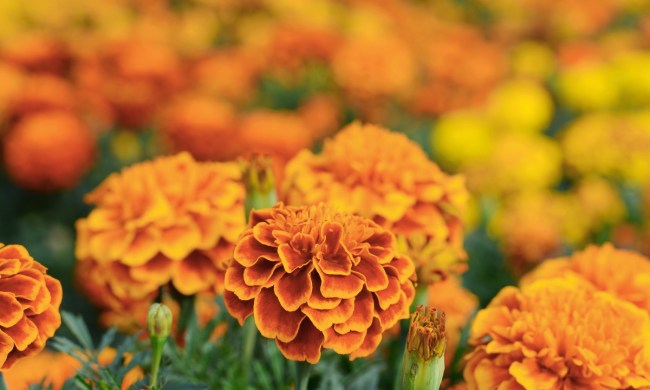Of the many popular flowers found in summer flower gardens, lilies are perhaps one of the most versatile. There are many colors, patterns, and even shapes available, so you’re sure to find a lily that fits your garden. One popular lily variety is the stargazer lily, which has large, striking flowers. In outdoor gardens, they make for a stunning centerpiece, but did you know you can also grow them indoors? They even make fantastic cut flowers! This guide will explain everything you need to know about caring for your stargazer lilies, whether indoors or out.
Indoor care

Stargazer lilies, like other lily varieties, can grow indoors with proper care. Indoor care for stargazer lilies begins with choosing the correct container. It needs to be deep and have sufficient drainage holes. Avoid shallow pots or those without drainage holes, such as ceramic pots. Likewise, you must use well-draining soil to avoid overwatering. Stargazer lilies enjoy moist soil, but they don’t tolerate standing water. Soil that is rich in organic matter is ideal.
Place your stargazer lily in your sunniest window or where it can get light from a grow light if you don’t have access to a good window. Water your stargazer lily once to twice weekly so the soil stays moist but not soggy. In the spring, freshen the soil with a slow-release fertilizer to keep your lily healthy and blooming.
Finally, keep your stargazer lily well away from cats. Lilies are toxic to cats, so your lily should be in a room your cat doesn’t have access to. Placing your stargazer lily up high where the cat cannot reach is a good start, as this prevents them from chewing on the plant. However, some cat owners have reported health issues caused by cats ingesting the pollen of lilies, which can reach cats even if they can’t get to the plant itself. If you think your cat has ingested or come into contact with lilies, contact your vet.
Forcing blooms

One of the benefits of growing your stargazers indoors is that you can force them. This is a method of getting your plant to bloom at a time when it typically would not. Stargazer lilies are frequently forced for Easter or Mother’s Day flowers.
To force your stargazers, place your bulbs in bags or in their pots (if already planted) in the refrigerator or in a similarly cold place for 6 to 12 weeks. This simulates winter. Afterward, plant and care for them as normal. Gradually increase the temperature (simulating the arrival of spring). You should see flowers roughly 100 days after planting, so time the beginning of the refrigeration accordingly.
Caring for stargazer lilies outdoors

While stargazer lilies can grow indoors during any season, you should start planting them outdoors during early spring or fall. Choose large, healthy bulbs when planting and make sure they are roughly 6 inches deep. Before planting, amend the soil with compost or a fertilizer that is high in organic matter.
Plant your stargazer lilies in full sun. Avoid planting them beneath trees or structures that would shade them in the afternoon. If every section of your yard has shade at some point in the day, don’t panic! Your stargazer lilies will survive in partial shade, but they may become leggy. If this happens, use a garden stake to keep them upright.
Water your stargazer lilies one to two times per week, but keep an eye on the weather. If it is hot and sunny, the water will evaporate out of the soil faster, so you’ll need to water more often. On the other hand, avoid watering them during rainy weather. Adding mulch around them or planting a living mulch can help the soil retain more water and keep weeds at bay.
If you have stray cats or outdoor cats in your neighborhood, you may want to check out these tips for keeping cats out of your garden. Installing a fence can be useful to keep cats away, as well as deer, rabbits, and some small mammals that like to eat young lilies in the spring. Snails and slugs will also eat lily shoots, but there are many ways to keep them at bay.
Choosing companion plants for stargazers

When growing your stargazer lily indoors, you may want to avoid companion planting. Unless you have a large container, companion planting can make the container crowded. However, larger containers can become unwieldy and it may be difficult to ensure every plant is getting enough light. If you do choose to add another plant, focus on smaller plants, like ferns or snowdrops, which can grow around the base of your lily.
Shorter plants are also a good choice when companion planting outdoors. Marigolds, crocuses, and cosmos will all grow well with stargazer lilies. Avoid planting tall flowers too close to your stargazer lily as they could shade your lily or, if you live in an area with high winds, the stems could rub against each other and cause abrasions. If you’d like to grow your stargazers with something like sunflowers or irises, make sure to space them accordingly!
Do stargazer lilies come back every year?

Good news! Stargazer lilies are perennials, and they will come back year after year. As long as you continue taking care of them, you should see stargazer lily flowers in your garden for several years. They die back in the winter, which can be concerning if you aren’t expecting it, but this is normal. The stem and leaves should wilt, but the bulb will send up new shoots when spring arrives. The exception to this is if you are growing your stargazer lily outdoors in a zone it is not hardy in.
Stargazer lilies are hardy in USDA zones 4-9, and outside of these zones, the weather is too hot or too cold for them. In these cases, it’s better to grow your stargazer lilies in containers, so that you can bring them indoors and protect them from the extreme temperatures.
Using this care guide, you’re ready to start growing your own stargazer lilies. Start planting your bulbs today, and before you know it, you’ll have plenty of lovely pink lilies. These striking flowers will brighten up your garden and surely bring a smile to your face!




